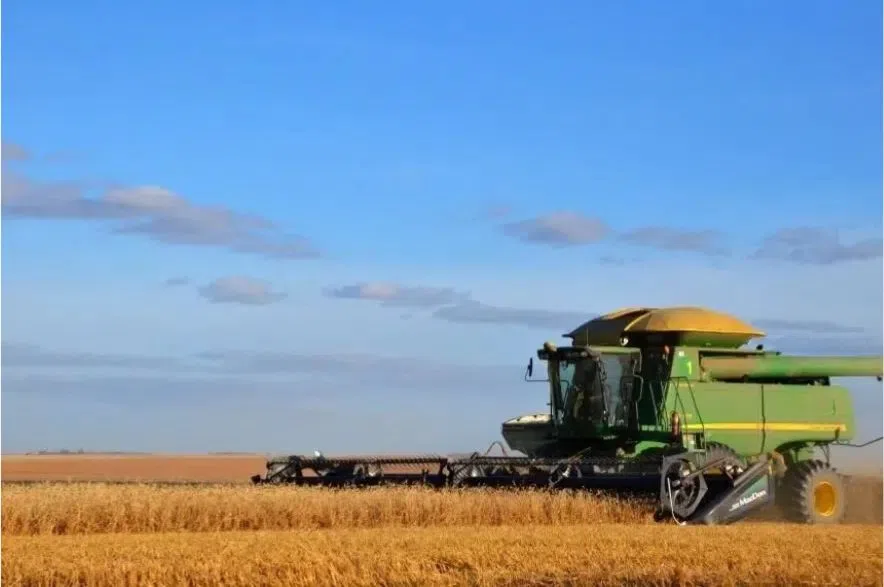Producers are nearly completely done bringing in crops and performing other field week last week before rain and snowfall stopped operations in many areas.
They are also hoping to get back into the field before winter sets in to harvest the rest of the crops and finish field work, said the crop report issued by the Ministry of Agriculture.
Read more:
- Meals in the field and hats in combines: A look at end-of-harvest traditions
- Tariff worries pile on wildfires worries for Sask. forestry industry
- ‘A major effect’ Bunge Canada CEO talks Chinese tariffs and canola
Provincially, harvest is 98 per cent complete, with west-central and northeast regions progress sits at 99 per cent, followed by the southeast and northwest at 98 per cent and the southwest and east-central at 97 per cent.
There is a small mount of oilseed, chickpea and canary seed crops that still need to be harvested. For oilseed crops, canola is at 98 per cent, mustard, 95 per cent, flax, 87 per cent and soybeans at 83 per cent, harvested.
“For the other small acreage crops, canary seed is 92 per cent harvested and chickpeas are 88 per cent harvested. All other pulse, spring cereal and winter cereal crop types have been harvested,” read the statement.
Producers welcomed the rain and snowfall last weekend. Most of the rain fell in the Strasbourg area, which received 52 mm, followed by Archerwill area, 50 mm, and Arborfield area, 43 mm.
The precipitation helped boost soil moisture levels.
The statement from the Ministry of Agriculture stated, “Cropland topsoil moisture is now rated at seven per cent surplus, 53 per cent adequate, 30 per cent short and 10 per cent very short. For hayland areas, topsoil moisture is five per cent surplus, 49 per cent adequate, 33 per cent short and 13 per cent very short. For pastures, topsoil moisture is three per cent surplus, 36 per cent adequate, 42 per cent short and 19 per cent very short.”
Producers are hoping to receive more precipitation before frost settles to improve soil moisture levels and recharge dugouts for next spring.
Wind, frost and snowfall caused minor environmental damage for the few remaining crops in the field.
Livestock producers are reporting overall “adequate” feed supplies for the winter. The current winter feed supplies are estimated as follows:
- Hay is nine per cent surplus, 82 per cent adequate and nine per cent short.
- Greenfeed is six per cent surplus, 89 per cent adequate and five per cent short.
- Silage is six per cent surplus, 92 per cent adequate and two per cent short.
- Straw is 14 per cent surplus, 78 per cent adequate and eight per cent short.
- Feed grain is 11 per cent surplus, 85 per cent adequate and four per cent short.
Producers are also busy spraying for weeds, applying fertilizer, harrowing fields and repairing equipment. Livestock producers are busy moving cattle home for the winter, hauling bales and marketing livestock.
Producers are reminded to keep safety top of mind, and to take extra caution on roadways as machinery is still moving from field to field, noted the statement.
A complete, printable version of the Crop Report is available online.











